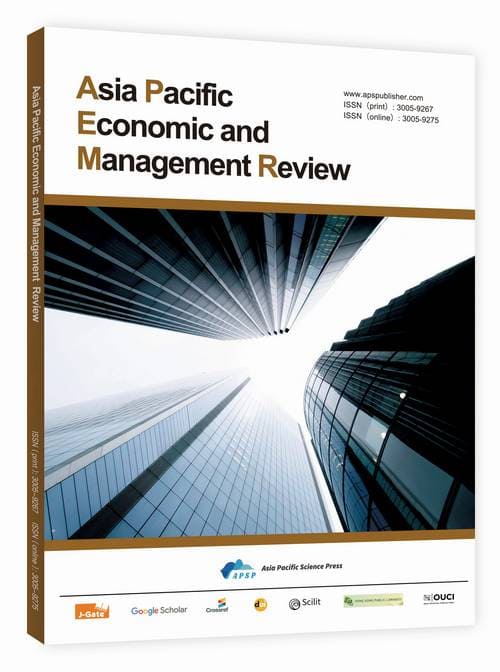Impacts of Food Delivery Culture on Dietary Health Among Young Adults in Shanghai
DOI:
https://doi.org/10.62177/apemr.v2i4.450Keywords:
Food Delivery, Dietary Health, Young Adults, Behavioral Determinants, Digital NutritionAbstract
This study investigates the effect of delivery culture on diet health among young adults in Shanghai, motivated by increased reliance on delivery platforms and their associated health consequences. The study contrasts dietary intake, nutrition knowledge, and convenience-manipulated behavioral determinants. A mixed-methods study design involved a structured survey (n = 196) supported by semi-structured interviews (n = 15). Quantitative data were analyzed with descriptive statistics, correlation, and regression, and qualitative answers were coded thematically using NVivo. Sampling was conducted with stratified random and purposive sampling to obtain representativeness according to age, gender, and delivery use behavior. Correlation analysis results showed a small but statistically significant (r = 0.35, p < 0.001) correlation between the frequency of food delivery and perceived health deterioration. Regression analysis picked convenience as the strongest predictor for higher consumption, while nutrition awareness did not find a statistically significant protective factor. Descriptive statistics showed that while 61.23% believe they care about nutrition while ordering, 30.62% order healthy food frequently. Platform suggestions, price, and habit strongly predict poor interview options. The study summarizes that while consumers self-report being aware of nutritional issues, online influence and behavioral inertia thwart healthy intentions. It recommends mandatory nutritional labeling, AI-supported healthy recommendations, and reward-based platforms on delivery apps. The main limitations are self-reported measures, the threat of sampling bias, and the geographic location of Shanghai. Future studies should examine the impacts of longitudinal health and sample the population in other Chinese cities.
Downloads
References
Ajzen, I. (1991). The theory of planned behavior. Organizational behavior and human decision processes, 50(2), 179-211.
Bandura, A. (1986). Social foundations of thought and action. Englewood Cliffs, NJ, 1986(23-28), 2.
Buettner, S. A., Pasch, K. E., & Poulos, N. S. (2023). Factors associated with food delivery app use among young adults. Journal of community health, 48(5), 840-846.
Cai, Y., Zhong, I., & Guan, S. (2021). An exploration of food delivery industry in Shanghai and its impact on workers welfare, environment and public health. Food Systems, Nutrition, and Health Research & Practice.
Campos, S., Doxey, J., & Hammond, D. (2011). Nutrition labels on pre-packaged foods: a systematic review. Public health nutrition, 14(8), 1496-1506.
Cecchini, M., & Warin, L. (2016). Impact of food labelling systems on food choices and eating behaviours: a systematic review and meta‐analysis of randomized studies. Obesity reviews, 17(3), 201-210.
Chadwick, L. (2024, August 24). Food delivery app use linked to higher likelihood of obesity and lower-level jobs. Euronews.
Chan, E. K., Kwortnik, R., & Wansink, B. (2017). McHealthy: how marketing incentives influence healthy food choices. Cornell Hospitality Quarterly, 58(1), 6-22.
Creswell, J. W. (2014). Research design: Qualitative, quantitative, and mixed methods approaches (4th ed.). Sage publications.
Creswell, J. W., & Clark, V. L. P. (2017). Designing and conducting mixed methods research. Sage publications.
Creswell, J. W., & Creswell, J. D. (2017). Research design: Qualitative, quantitative, and mixed methods approaches. Sage publications.
Dai, X., Wu, L., & Hu, W. (2022). Nutritional quality and consumer health perception of online delivery food in the context of China. BMC Public Health, 22(1), 2132.
Darmon, N., & Drewnowski, A. (2008). Does social class predict diet quality? The American journal of clinical nutrition, 87(5), 1107-1117.
DeVellis, R. F., & Thorpe, C. T. (2021). Scale development: Theory and applications. Sage publications.
Dobbyn, T. (2024, October 10). Smart App ‘Nudges’ Users to Make Healthy Food Choices. College of Agricultural and Environmental Sciences.
Etikan, I., & Bala, K. (2017). Sampling and sampling methods. Biometrics & Biostatistics International Journal, 5 (6), 00149.
Fu, H., Martin, W., Huang, C., Kouwenhoven, G. A., & van der Leij, F. R. (2021). Dietary Protein Choices of Young Adults are determined by Different Driving Forces in Shanghai and Amsterdam. Journal of Agriculture and Environmental Sciences, 10(2), 9-15.
Garone, S. (2024, January l8). How cooking at home compares to dining out when it comes to nutrition and costs. Health.
Goyal, M., & Deshwal, P. (2023). Online post-purchase customer experience: a qualitative study using NVivo software. Quality & quantity, 57(4), 3763-3781.
Greene, J. C., Caracelli, V. J., & Graham, W. F. (1989). Toward a conceptual framework for mixed-method evaluation designs. Educational evaluation and policy analysis, 11(3), 255-274.
Grummon, A. H., Musicus, A. A., Moran, A. J., Salvia, M. G., & Rimm, E. B. (2023). Consumer reactions to positive and negative front-of-package food labels. American journal of preventive medicine, 64(1), 86-95.
Gu, C., Brereton, N., Schweitzer, A., Cotter, M., Duan, D., Børsheim, E., ... & Jun, J. C. (2020). Metabolic effects of late dinner in healthy volunteers—a randomized crossover clinical trial. The Journal of Clinical Endocrinology & Metabolism, 105(8), 2789-2802.
Haynes, S. N., Richard, D., & Kubany, E. S. (1995). Content validity in psychological assessment: A functional approach to concepts and methods. Psychological assessment, 7(3), 238.
Heale, R., & Twycross, A. (2015). Validity and reliability in quantitative studies. Evidence-based nursing, 18(3), 66-67.
Ho, J., Poh, F., Zhou, J., & Zipser, D. (2019). China consumer report 2020. Mckinsey and Company.
Joshi, A., Kale, S., Chandel, S., & Pal, D. K. (2015). Likert scale: Explored and explained. British journal of applied science & technology, 7(4), 396.
Li, J., Sun, A., Ma, W., Sun, P., & Zhang, M. (2024). Recommender for Its Purpose: Repeat and Exploration in Food Delivery Recommendations. arXiv preprint arXiv:2402.14440.
Li, R. C. (2023). The metrics and management of food waste associated with online food delivery in China (Doctoral dissertation, University of Otago).
Malik, V. S., Popkin, B. M., Bray, G. A., Després, J. P., & Hu, F. B. (2010). Sugar-sweetened beverages, obesity, type 2 diabetes mellitus, and cardiovascular disease risk. Circulation, 121(11), 1356-1364.
Mckay, E., Kemps, E., Prichard, I., & Tiggemann, M. (2023). Small, regular or large? The effect of size options on online food choices. Food Quality and Preference, 105, 104768.
Mehta, S., Mukhija, G., & Mehta, H. (2022). Determinants of nutrition consciousness of young adults on food delivery apps: a analytical study. BSSS Journal of Management, 13(1), 106-119.
Monteiro, C. A., Moubarac, J. C., Cannon, G., Ng, S. W., & Popkin, B. (2013). Ultra‐processed products are becoming dominant in the global food system. Obesity reviews, 14, 21-28.
Palinkas, L. A., Horwitz, S. M., Green, C. A., Wisdom, J. P., Duan, N., & Hoagwood, K. (2015). Purposeful sampling for qualitative data collection and analysis in mixed method implementation research. Administration and policy in mental health and mental health services research, 42, 533-544.
Pomeranz, J. L., Cash, S. B., Springer, M., Del Giudice, I. M., & Mozaffarian, D. (2022). Opportunities to address the failure of online food retailers to ensure access to required food labelling information in the USA. Public Health Nutrition, 25(5), 1375-1383.
Roorda, B. A., & Cassin, S. E. (2025). A Review of Food-Related Social Media and Its Relationship to Body Image and Disordered Eating. Nutrients, 17(2), 342.
Seid, A., Fufa, D. D., & Bitew, Z. W. (2024). The use of internet-based smartphone apps consistently improved consumers' healthy eating behaviors: a systematic review of randomized controlled trials. Frontiers in Digital Health, 6, 1282570.
Sharib, J. R., Pomeranz, J. L., Mozaffarian, D., & Cash, S. B. (2024). Disclosure of mandatory and voluntary nutrition labelling information across major online food retailers in the USA. Public Health Nutrition, 27(1), e203.
Shu, X., Calvert, J. K., Cai, H., Xiang, Y. B., Li, H., Zheng, W., ... & Hsi, R. S. (2019). Plant and animal protein intake and risk of incident kidney stones: results from the Shanghai Men's and Women's health studies. The Journal of urology, 202(6), 1217-1223.
Singleton, L. (2024, April 22). Taxing unhealthy food helps cut obesity, says global study. Imperial College London.
Steele, E. M., Baraldi, L. G., da Costa Louzada, M. L., Moubarac, J. C., Mozaffarian, D., & Monteiro, C. A. (2016). Ultra-processed foods and added sugars in the US diet: evidence from a nationally representative cross-sectional study. BMJ open, 6(3), e009892.
Tahim, J. C., Verde, S. M. M. L., Maia, C. S. C., & Bezerra, I. N. (2024). Consumption of Food Offered by Delivery Applications (Apps). International Journal of Environmental Research and Public Health, 21(5), 568.
Tan, S., & Lim, R. (2023). Affordability and access in Southeast Asian food delivery ecosystems. Asia Pacific Journal of Public Health, 35(1), 75–82.
Tashakkori, A. (2010). SAGE handbook of mixed methods in social & behavioral research. Sage.
Taylor, M. K., Sullivan, D. K., Ellerbeck, E. F., Gajewski, B. J., & Gibbs, H. D. (2019). Nutrition literacy predicts adherence to healthy/unhealthy diet patterns in adults with a nutrition-related chronic condition. Public health nutrition, 22(12), 2157-2169.
Triyuni, N. N., Leo, G., & Suhartanto, D. (2021, November). Online food delivery service. In 2nd International Seminar of Science and Applied Technology (ISSAT 2021) (pp. 697-702). Atlantis Press.
Tufts Health & Nutrition. (2019, September 17). Cost of Eating Right-Whos Right? - Tufts Health & Nutrition Letter. Tufts Health & Nutrition Letter.
Van Teijlingen, E., & Hundley, V. (2001). The importance of pilot studies. Social research update, (35), 1-4.
Wansink, B., & Chandon, P. (2006). Can “low-fat” nutrition labels lead to obesity?. Journal of marketing research, 43(4), 605-617.
World Health Organization. (2024). Food environments: Policy brief and guidance. WHO.
Yang, Z., Khatibi, E., Nagesh, N., Abbasian, M., Azimi, I., Jain, R., & Rahmani, A. M. (2024). ChatDiet: Empowering personalized nutrition-oriented food recommender chatbots through an LLM-augmented framework. Smart Health, 32, 100465.
Zhang, Y., Fan, Y., Liu, P., Xu, F., & Li, Y. (2024). Cyber Food Swamps: Investigating the Impacts of Online-to-Offline Food Delivery Platforms on Healthy Food Choices. arXiv preprint arXiv:2409.16601.
Downloads
How to Cite
Issue
Section
License
Copyright (c) 2025 Tao Yang

This work is licensed under a Creative Commons Attribution-NonCommercial 4.0 International License.

















